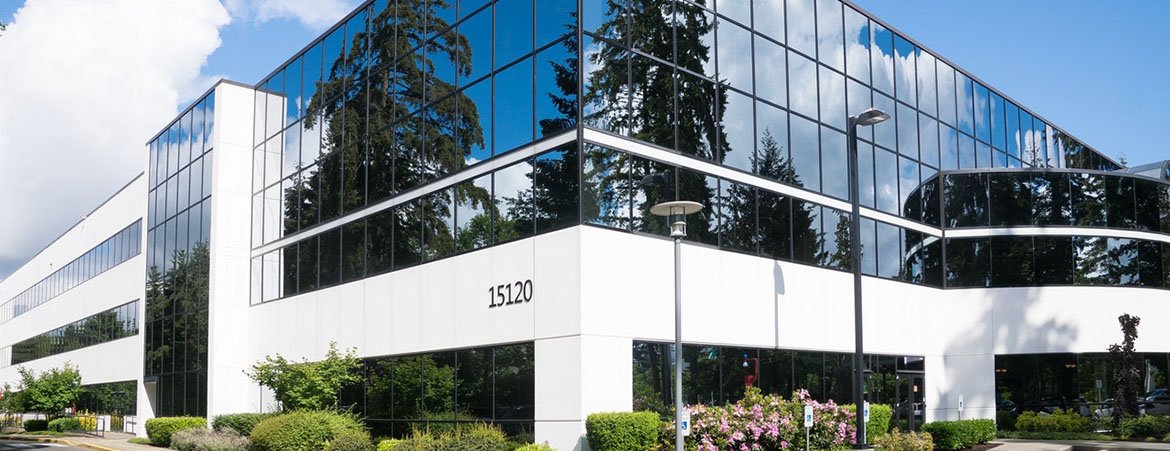All you Need to Know about Digital Building Directories
A digital building directory is a display system. It consists of software and a screen that displays the layout of a building and a list of offices. Commercial and residential properties are the most popular buyers of building directories. But these type of directories can be used in virtually any business. Malls, office spaces, hospitals, schools, places of worship, hotels, government buildings and entertainment venues can all benefit from digital building directories.
Some common uses of digital building directories include:
- Standard tenant listings
- Displaying building amenities
- Showing leasing contact info and building pictures
- Displaying floor plans
Property managers can also display:
- Local traffic alerts and maps
- Transit options such as bus and metro schedules
- Live news feeds
- A list of local events
- Weather
- Ads for tenants
- Emergency alerts
11 Benefits of Digital Building Directories
There are numerous benefits to digital building directories including:
- They’re easy to update – the information displayed is always up to date.
- Logos, colors, and fonts are customizable to ensure brand consistency.
- They add aesthetic appeal to the building and create a great first impression and welcoming experience.
- Content scheduling and dayparting are easy. This enables users to display targeted and relevant information (e.g. displaying traffic maps during busy periods like lunch hours).
- Attract attention and improve retention with display videos and animations.
- Interactive directories enable self-service which improves the visitor experience.
- Boosts the visitor experience by displaying spatially oriented maps that can be downloaded to smartphones.
- When placed outside elevators, they reduce perceived wait times by up to 35%.
- Saves cost over time – on average, it costs $400, 3 people, and 3 weeks to add a new tenant to a traditional building directory. It costs zero to add a tenant to a digital directory and this can be done within minutes by one person.
- Multiple directories can be managed from one login. This centralized management ensures consistency and saves costs.
- Generates additional revenue for the property managers by selling ad space to tenants and other local businesses.
The real ROI of a digital building directory is the cost benefits and qualitative advantages listed above.
Indoor vs Outdoor Building Directories
Both outdoor and indoor environments have different expectations and challenges. This is especially true when it comes to the hardware demands for building directories.
An outdoor ecosystem presents unique challenges that often translate to additional costs.
Considerations for outdoor building directories include the following requirements:
- Hardware rated for outdoor use that has sealing to protect against dust/debris and moisture.
- Enclosures with cooling and heating to regulate temperatures.
- High-brightness displays with a minimum brightness level of 1,500 nits.
- Secure hardware with extra weld points, compression locks, tempered safety glass, and galvanized steel.
The content displayed on outdoor directories may also vary. Those installed in high traffic areas with low dwell times may show “short” content with very focused messaging. On the other hand, those in lobbies with high dwell times can show longer content.
What Is an Interactive Building Directory?
Interactive building directories, sometimes called touchscreen building directories, offer deeper and more meaningful engagement. This is due in large part to additional options.
They are able to carry a bigger number of entries and information pages. This enables users to drill down further to their selection.
Interactive Building Directory Entries
- wayfinding maps,
- enhanced landing pages for tenants,
- virtual receptions,
- the ability to call tenants for access to the building,
- multiple language options,
- and much more.
Visitors can use on-screen keyboards to search for entries by category, name, etc.
More control
In today’s age, most people expect to have more control over their experiences. Interactive directories are one way to provide this. In addition, visitors tend to get more information from interactive directories. In turn, this empowers them and adds value to their experience.
Interactive directories also make your facilities easy and safe to navigate. This can help curb anxiety and unfamiliarity for first-time visitors. Additionally, this will create positive interactions within the spaces which will foster loyalty and long-term engagement.
Components of a Building Directory
Digital building directories fall under the umbrella of digital signage – a type of mass communication that comprises hardware and software. These tools create a centralized information distribution platform. This platform enables the transmission of media to one or multiple displays for informational or promotional purposes.
Besides enabling a business to create and edit content, digital signage software also allows users to schedule content for specified times and durations. The software also grants users the ability to manage the signage remotely.
The components of a digital building directory include:
1. Display screen
This refers to a large panel 16:9 screen with an HDMI port.
Commercial-grade displays hold an advantage over consumer-grade screens. They can:
- remain in operation for longer hours,
- are brighter,
- more suited for commercial environments,
- provide for either vertical or horizontal orientations.
2. A media player
Also called a digital signage player, the media player downloads content from the software. It then caches it on internal storage before displaying it on the screens. Because the content is cached, the screens will never go blank, even when there is no internet.
The player is connected to the display through HDMI. It receives and downloads content through an internet connection (Wi-Fi or Ethernet).
3. Digital building directory software
The content management software (CMS) is the brains of the system.
It enables users to upload and/or create content, configure it, and deploy it to the displays.
The best software will include content apps that auto-update. This means once you update the source (e.g., a Google Calendar listing your events), the content on the screens is automatically updated. Additionally, you can update the content schedules to alter the content on display or change the time of display.
Since it’s often cloud-based, you can access the digital signage software remotely. This allows managers to easily update content and check on the status of the system.
4. Content
Most digital signage providers will offer building directory templates. This makes it easy to customize and update content displayed on the screen.
Your tenants and guests interact with your content. It’s the main driver of success and achieving excellent ROI. As such, it’s vital to refine your content for your displays to ensure your audience easily understands the messaging.
Design Tips for Digital Building Directories
Regardless of industry, first impressions matter. And when it comes to digital building directories, presentation is everything.
To ensure you’re welcoming guests to your building with visually riveting digital lobby directories, here are some design tips you can follow:
1. Keep text concise
As a rule of thumb, you should aim to keep the phrases short and concise with a max of 4-5 words per line. Any more than that and your screen will be cluttered.
The text should also be large enough to read from a distance.
The font should be simple and legible. Don’t use more than two different fonts per design.
2. Have breathing space
This means keeping the screens simple while still using focus techniques. For example, incorporate lots of white space to allow designs to “breath”. This will focus attention on important information.
Using high-contrast items, headlines, etc. will create a visual hierarchy so guests know where to look.
For interactive designs, it’s important to not overcomplicate your interface. Controls should be intuitive and visitors should be able to go back to previous listings with ease.
3. Consider lighting
Because directories tend to be in lobbies or outdoors, lighting is a unique consideration for the design. Lighting will impact how easy it is for your visitors to read the directory.
Take into account natural light shifts during the day. Hence, test the legibility of your digital building directory throughout the day.
4. Choose the right colors
Colors help your viewers to separate the different elements of your design. So, good color contrast improves legibility while poor contrast kills legibility.
Different colors also evoke different emotions:
- Warm bright colors: often more visible and make items seem larger. Also, they tend to convey a sense of welcome.
- Cold, bright hues: such as azure, silver, or lavender tend to convey a modern and professional feel.
- Cold, dark colors: such as navy, green, or violet express a sense of stability and quality. Nevertheless, apply caution when using cold, dark colors to showcase content. They usually tend to blend in with other colors instead of producing rich contrasts.
- Warm, dark colors: such as purple, brown, or gold seem to indicate a sense of tradition and class. For that reason, many people frequently link them to businesses that offer exclusive services, for instance, financial consultants and architects.
Conclusion
How your guests use and interact with your building directory should be your primary driver. When implemented in the right way, digital building directories will add tremendous value by creating a better, more customized experience for both guests and tenants.



